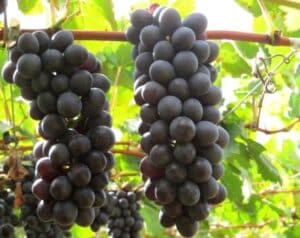Brazilian variety 100% took almost a decade to be developed by Embrapa and has been gaining the taste of producers rural Brazil outside. Tasty, seedless and productive: discover the BRS-Vitória grape A new grape variety is being increasingly cultivated in the São Francisco River Valley, in Pernambuco, the BRS-Vitória.
However, it is successful because it has no seeds and is very sweet. Watch all Globo Rural videos This cultivar is the result of the crossing of 2 genetic materials that are part of the largest collection of vines in all of Latin America, located at the headquarters of Embrapa Uva e Vinho, in Bento Gonçalves, Rio Grande do Sul.

improvement in genetics
Since the 1970s, the Brazilian Agricultural Research Corporation has been developing a program for the genetic improvement of Brazilian grapes, which has already launched 21 varieties for wine, juice and tableware. BRS-Vitória left there, was tested in São Paulo and Paraná until it conquered the world from the São Francisco River Valley.
Embrapa agronomists took about 10 years to develop and test this new variety. Rural producer Jackson Lopes, one of the pioneers in the activity, remembers a blind tasting held 7 years ago, with 65 types of grapes.
“It caught my attention, but she didn't have a characteristic that drew attention to producers because she had small curls”, she recalls. “But, having drawn attention to the taste preference, we decided to invest in technical work in order to increase productivity”, says farmer Jackson Lopes. The general head of Embrapa Grape and Wine, José Fernando Protas, said that the success of the variety left some lessons for future research.
“Not only the aesthetic aspect must be taken into account, but the sensorial aspect, of taste and flavor, must be taken into account when creating a variety”, he says. And one of the items that most pleased the palate of those who bet on the Vitória grape was that it has no seeds. “The important aspect is that the trace of the Vitória seed is not noticeable when chewing.
Created to be consumed
Thus, its reproduction takes place by another type, another process, of grafting, and not through seed.” Grafting is the technique that consists of joining a good plant with roots and another that will bear tasty fruits, in this case Vitória.
Farmer Marcelo Alves has a partnership with Embrapa to produce seedlings of the variety.
Since then, he has only seen the demand for the variety grow, from 72,000 seedlings in 2015 to 950,000 in 2019.
The researchers who developed BRS-Vitória themselves are surprised by all this tasty success. “Cultivation is the same when we have a child.
when it grows, it has its trajectory, we cannot often predict it”, says researcher and agronomist at Embrapa Patrícia Ritschel. 5 harvests in 2 years Another advantage of this variety is its rapid development from one harvest to another.
This makes the producers of the São Francisco River Valley achieve the feat of harvesting the tasty Vitória grape every week of the year, but for that, it is necessary to do a drastic pruning, which exposes the vines to the sun.
speed of fruiting
It is carried out 30 days after harvest. “For those who don't know, it appears that we killed the plant, but, from the moment of pruning until a new harvest, it takes approximately 105 to 112 days”, explains farmer Jackson Lopes. Therefore, the speed of fruiting is also a specific condition of Vitória, which allows it to produce up to 5 harvests in 2 years. Investment by farmers Producers from Vale do São Francisco have already placed BRS-Vitória on more than 1.5 thousand hectares.
Farmer Gilson Moreira is one of those who were excited about the grape's market potential, and that's why. Although it is investing around R$ 80 thousand per hectare in the expansion of the vineyard.
So far, the planting of Vitória grapes on the property occupies an area of 3.5 hectares.
By the end of the year, it will be 7 hectares.


